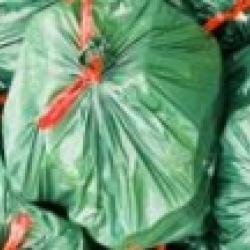Source Institutions
Source Institutions
Add to list Go to activity

In this activity, learners simulate the separation techniques that materials recovery facilities (MRFs) use and then design their own series of recycling techniques. Learners identify four ways recyclable materials can be separated and sorted at a MRF: conveyor belts, blowers, flotation, and magnetism. [Activity is publicly available through a web crawler capture on Archive.org. Activity write-up only, images are unavailable.]
- 30 to 45 minutes
- 1 to 2 hours
- $1 - $5 per group of students
- Ages 11 - 14
- Activity, Demonstration, Experiment/Lab Activity, Lesson/Lesson Plan, Simulation
- English
Quick Guide
Materials List (per group of students)
- Large bag of clean “garbage” (many types and sizes of paper, assorted plastic containers, aluminum cans, aerosol and other steel cans)
- Paper clips
- Bits of wire
- Large magnet
- Wide shallow dish pan
- Water
- Large box lid
- Stop watch or clock
- Fan
Subjects
-
Engineering and Technology
- Engineering
- Technology
-
Life Sciences
-
Ecology
- Human Impact
-
Ecology
-
Physical Sciences
- Electricity and Magnetism
- Structure and Properties of Matter
- Vibration and Waves
-
The Nature of Science
-
Science and Society
- Risks and Benefits
- The Scientific Process
-
Science and Society
-
The Nature of Technology
-
Technology and Society
- Impacts of Technology
- Technology and the Environment
-
The Design Process
- Invention and Innovation
-
Technology and Society
Informal Categories
- Nature and Environment
Audience
To use this activity, learners need to:
- see
- touch
Learning styles supported:
- Involves hands-on or lab activities
Other
Access Rights:
- Free access
By:
Source Collection
- Teachers TryScience
Rights:
- All rights reserved, Keep America Beautiful, Inc., 2010
Funding Source:
- National Science Foundation
